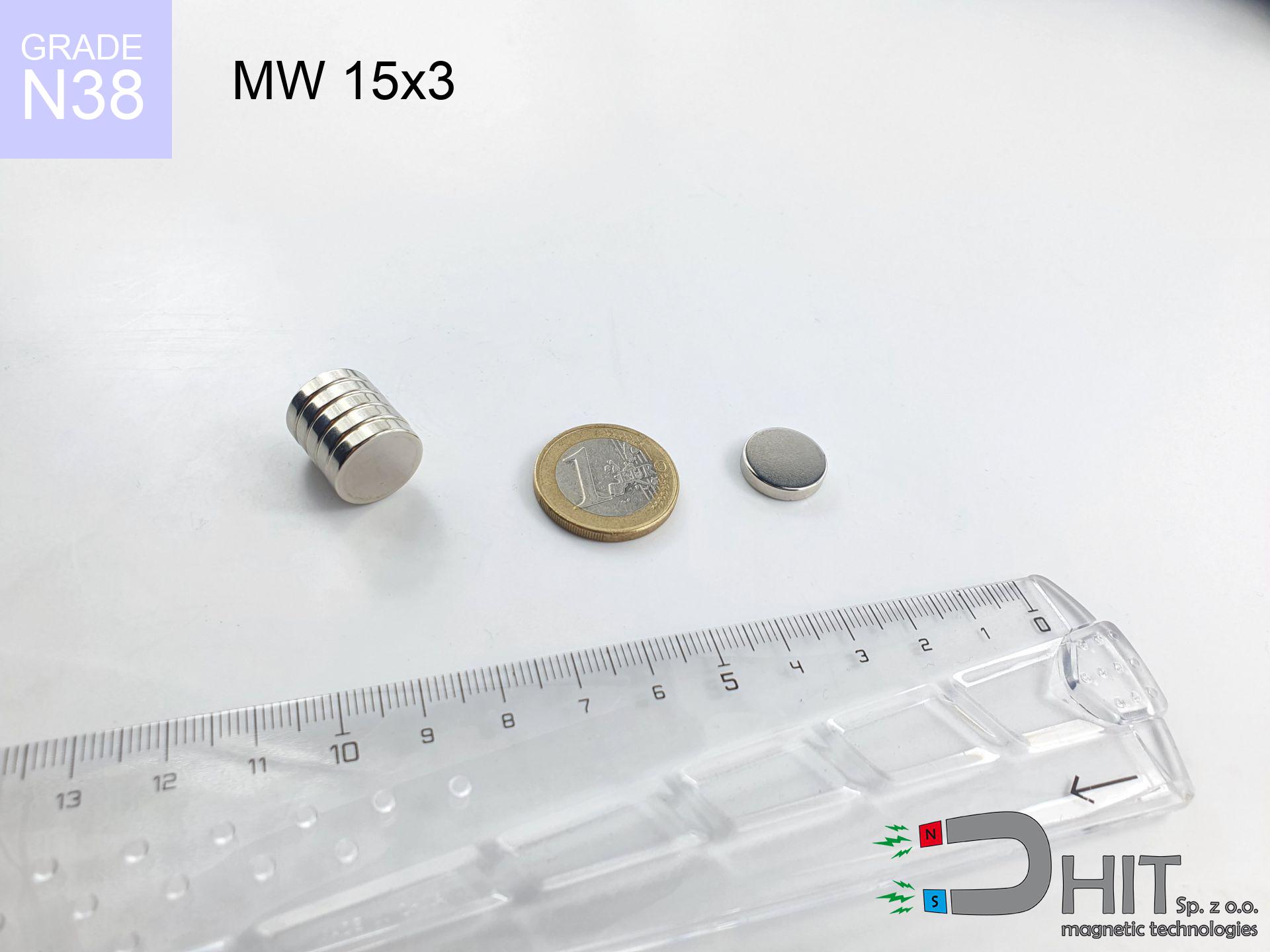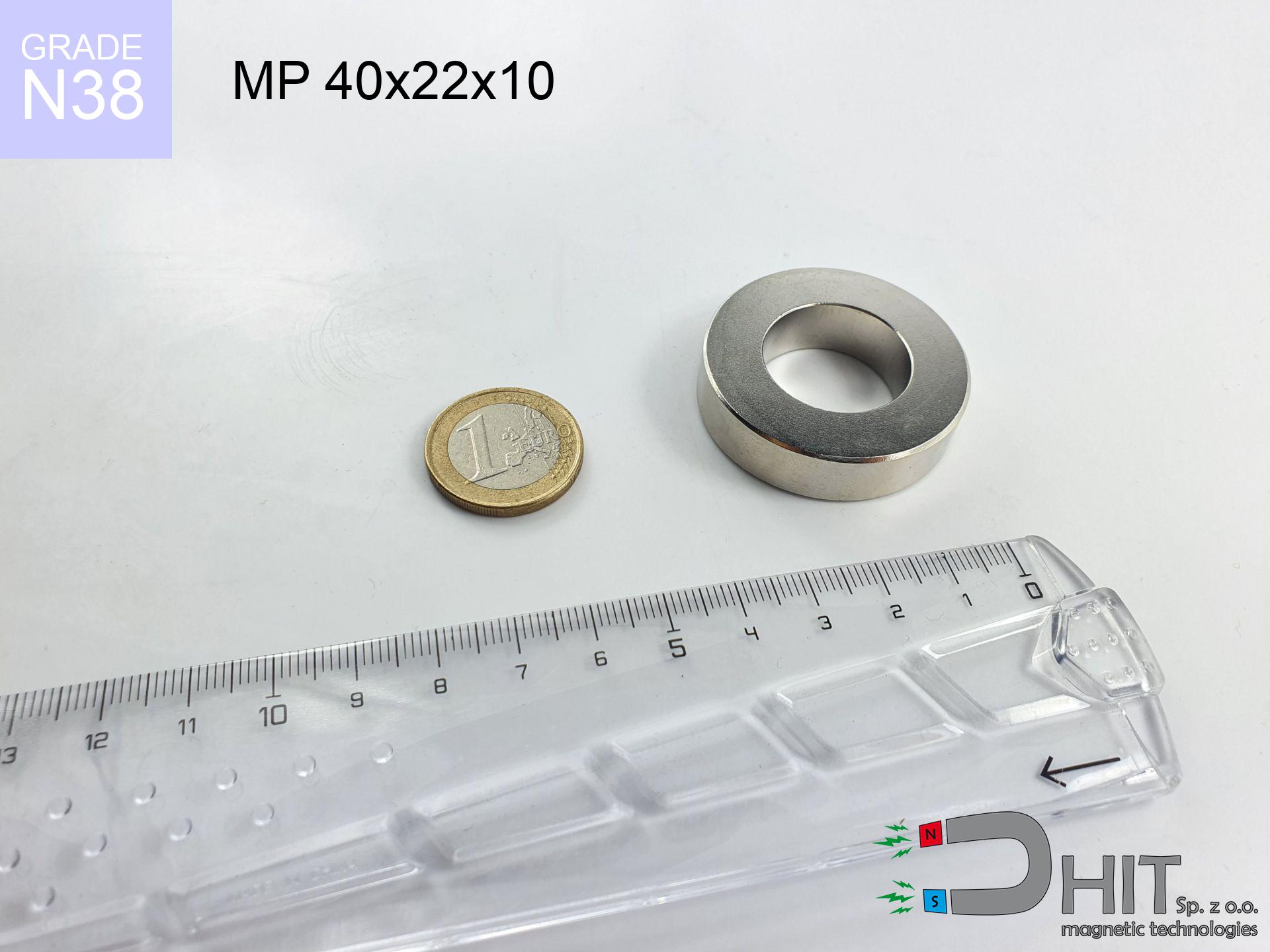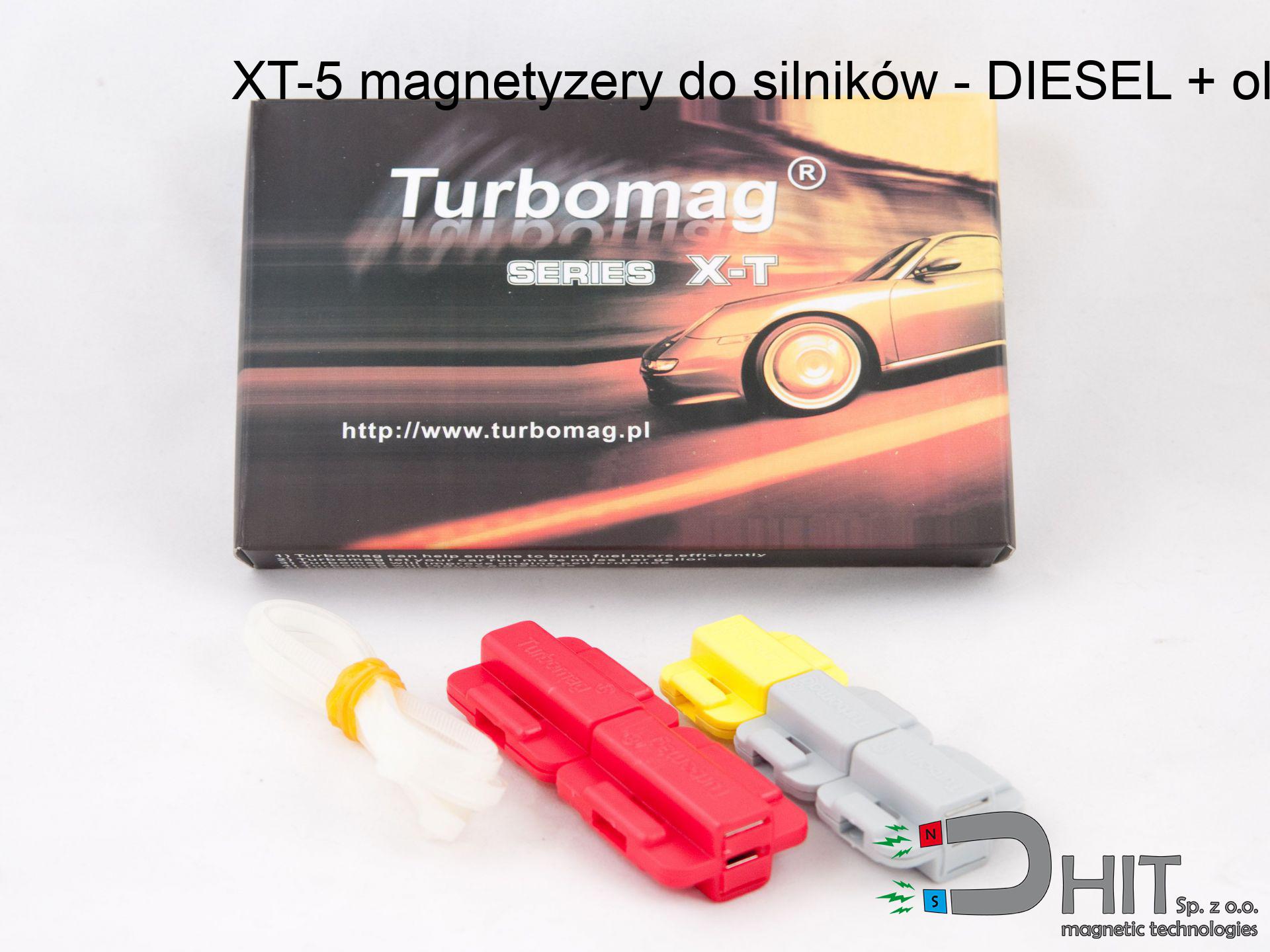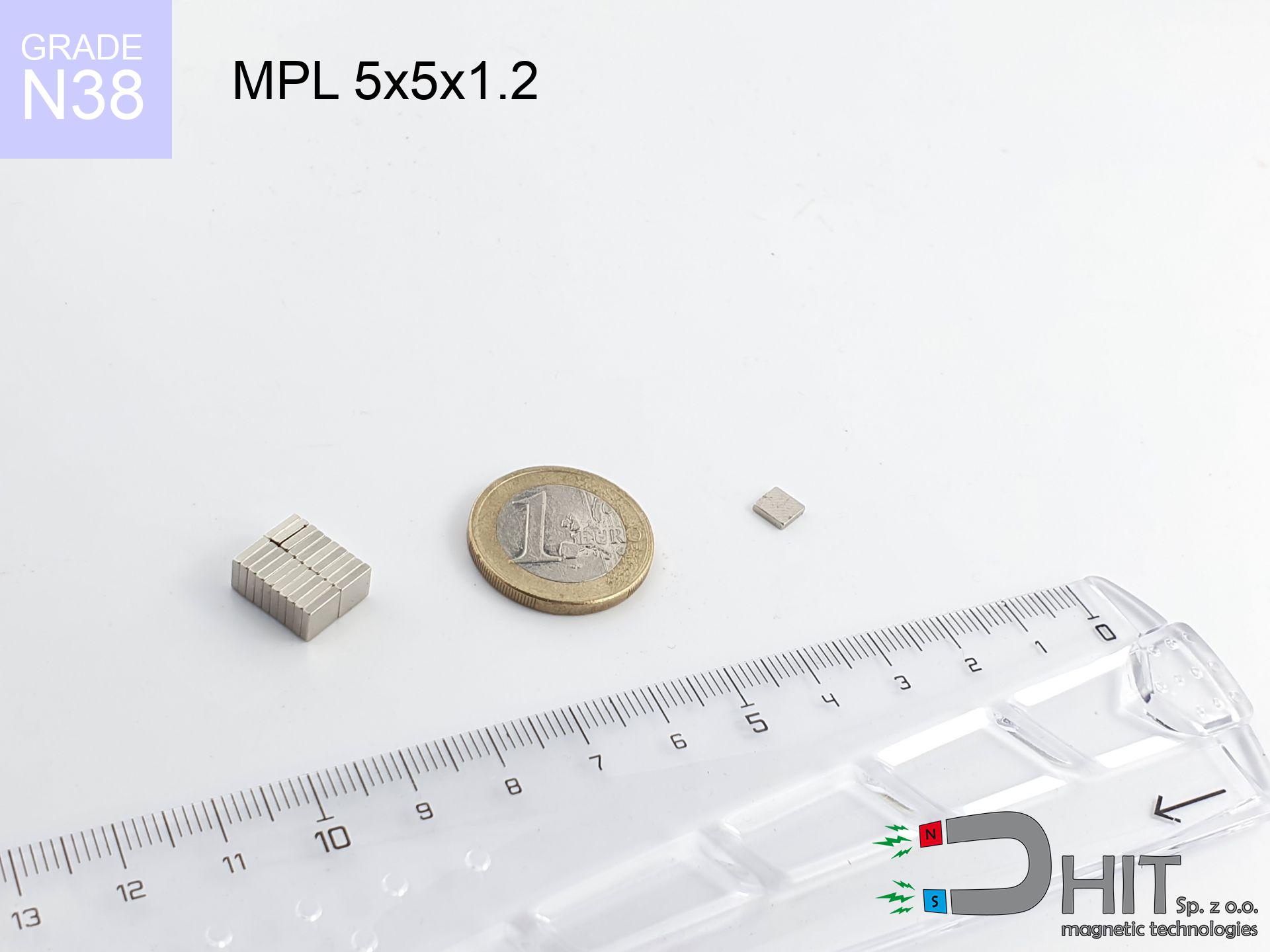MW 10x20 / N38 - cylindrical magnet
cylindrical magnet
Catalog no 010007
GTIN: 5906301810063
Diameter Ø
10 mm [±0,1 mm]
Height
20 mm [±0,1 mm]
Weight
11.78 g
Magnetization Direction
↑ axial
Load capacity
11.06 kg / 108.46 N
Magnetic Induction
600.73 mT
Coating
[NiCuNi] nickel
4.92 ZŁ with VAT / pcs + price for transport
4.00 ZŁ net + 23% VAT / pcs
bulk discounts:
Need more?Want to negotiate?
Give us a call
+48 22 499 98 98
otherwise send us a note by means of
our online form
the contact page.
Strength along with form of a magnet can be checked with our
magnetic mass calculator.
Same-day processing for orders placed before 14:00.
Magnetic properties of material N38
Physical properties of sintered neodymium magnets Nd2Fe14B at 20°C
Shopping tips
Strengths and weaknesses of neodymium magnets.
Besides their durability, neodymium magnets are valued for these benefits:
- They have unchanged lifting capacity, and over around 10 years their attraction force decreases symbolically – ~1% (according to theory),
- They have excellent resistance to weakening of magnetic properties due to opposing magnetic fields,
- In other words, due to the metallic layer of gold, the element is aesthetically pleasing,
- Neodymium magnets generate maximum magnetic induction on a small surface, which allows for strong attraction,
- Neodymium magnets are characterized by very high magnetic induction on the magnet surface and can work (depending on the shape) even at a temperature of 230°C or more...
- In view of the ability of free shaping and customization to individualized requirements, NdFeB magnets can be created in a variety of shapes and sizes, which amplifies use scope,
- Wide application in electronics industry – they find application in mass storage devices, electric motors, medical equipment, also modern systems.
- Relatively small size with high pulling force – neodymium magnets offer strong magnetic field in small dimensions, which enables their usage in compact constructions
What to avoid - cons of neodymium magnets: application proposals
- At very strong impacts they can crack, therefore we advise placing them in steel cases. A metal housing provides additional protection against damage and increases the magnet's durability.
- NdFeB magnets lose power when exposed to high temperatures. After reaching 80°C, many of them experience permanent drop of strength (a factor is the shape and dimensions of the magnet). We offer magnets specially adapted to work at temperatures up to 230°C marked [AH], which are very resistant to heat
- When exposed to humidity, magnets usually rust. For applications outside, it is recommended to use protective magnets, such as magnets in rubber or plastics, which secure oxidation and corrosion.
- Limited possibility of creating threads in the magnet and complicated shapes - recommended is a housing - magnetic holder.
- Potential hazard to health – tiny shards of magnets pose a threat, when accidentally swallowed, which is particularly important in the context of child health protection. Furthermore, tiny parts of these products are able to be problematic in diagnostics medical when they are in the body.
- Due to expensive raw materials, their price is relatively high,
Detachment force of the magnet in optimal conditions – what affects it?
Holding force of 11.06 kg is a result of laboratory testing conducted under the following configuration:
- with the use of a yoke made of special test steel, guaranteeing full magnetic saturation
- whose thickness is min. 10 mm
- with a surface cleaned and smooth
- without any insulating layer between the magnet and steel
- during detachment in a direction vertical to the mounting surface
- in stable room temperature
Impact of factors on magnetic holding capacity in practice
Effective lifting capacity impacted by working environment parameters, such as (from priority):
- Clearance – the presence of foreign body (paint, tape, gap) acts as an insulator, which lowers power steeply (even by 50% at 0.5 mm).
- Loading method – declared lifting capacity refers to pulling vertically. When applying parallel force, the magnet exhibits much less (typically approx. 20-30% of nominal force).
- Wall thickness – thin material does not allow full use of the magnet. Magnetic flux penetrates through instead of generating force.
- Steel grade – ideal substrate is pure iron steel. Stainless steels may generate lower lifting capacity.
- Plate texture – smooth surfaces ensure maximum contact, which increases field saturation. Uneven metal weaken the grip.
- Temperature – heating the magnet results in weakening of induction. Check the thermal limit for a given model.
* Holding force was tested on a smooth steel plate of 20 mm thickness, when the force acted perpendicularly, in contrast under attempts to slide the magnet the lifting capacity is smaller. In addition, even a minimal clearance {between} the magnet’s surface and the plate lowers the holding force.
Precautions when working with NdFeB magnets
Shattering risk
Despite metallic appearance, neodymium is delicate and not impact-resistant. Avoid impacts, as the magnet may shatter into hazardous fragments.
Allergy Warning
Studies show that the nickel plating (the usual finish) is a strong allergen. For allergy sufferers, avoid direct skin contact or select versions in plastic housing.
Safe operation
Before use, read the rules. Uncontrolled attraction can break the magnet or hurt your hand. Think ahead.
Electronic hazard
Very strong magnetic fields can corrupt files on credit cards, HDDs, and storage devices. Stay away of at least 10 cm.
Implant safety
Life threat: Strong magnets can deactivate heart devices and defibrillators. Stay away if you have medical devices.
Heat warning
Regular neodymium magnets (N-type) undergo demagnetization when the temperature goes above 80°C. This process is irreversible.
Do not give to children
Only for adults. Tiny parts can be swallowed, leading to serious injuries. Keep out of reach of kids and pets.
Bone fractures
Big blocks can crush fingers instantly. Under no circumstances put your hand betwixt two attracting surfaces.
Mechanical processing
Dust generated during machining of magnets is self-igniting. Do not drill into magnets unless you are an expert.
Compass and GPS
An intense magnetic field negatively affects the operation of compasses in phones and GPS navigation. Maintain magnets close to a smartphone to prevent damaging the sensors.
Caution!
Want to know more? Check our post: Are neodymium magnets dangerous?









